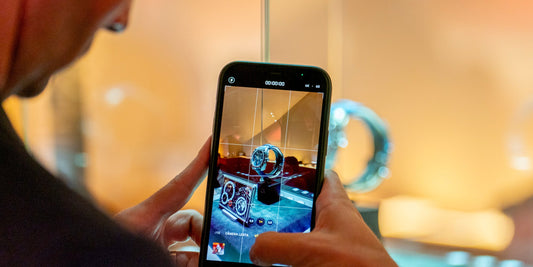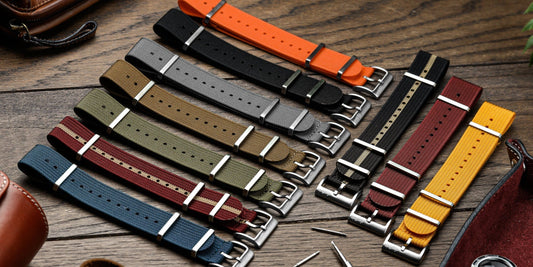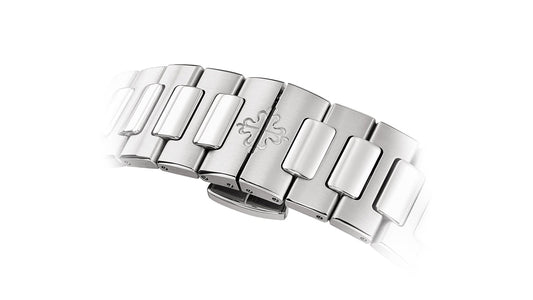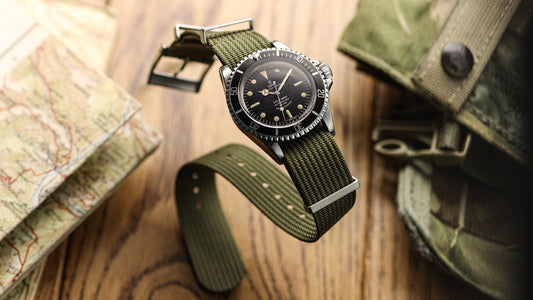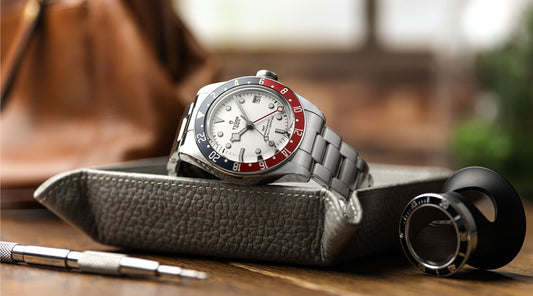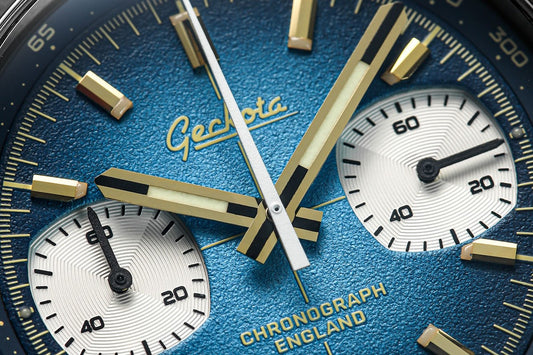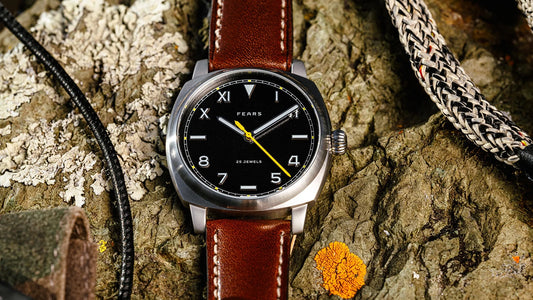It’s now been over five years since Tudor launched perhaps its most overlooked watch, the North Flag. In our microscopic long-term review and analysis, we ask if this ‘marmite’ watch is actually the watch that...
It’s tough being a watch enthusiast and even tougher being a collector. For most of us, there is never just the one watch we have our eye on next. If we’re lucky, we have a shortlist. But for some, what starts off as a shortlist, gets longer and longer as watches from different brands rile for our attention. How many of us have heard something along the lines of “isn’t that exactly the same as the one you already have?” coming from the mouths of our loved ones? If we’re honest, it’s sometimes understandable how they can come to this conclusion. After all, it’s not that often that a watch comes along that can hold a unique place in our collection, with no overlap from our existing stock.

The Tudor North Flag - Image Credit: Guy Parker
Being indistinct or ‘clone-like’ is certainly not an accusation that can be directed at the North Flag, however. This watch had been on my ‘list’ for a while, having liked it since it was released back in 2015. But whilst I was drawn to it for its uniqueness, I wasn’t totally convinced I loved it and I was worried how it would wear with its rather slab-sided case; it would be after all a not inconsiderable purchase. So when a good friend from a reputable local dealer called to say he’d just got a pre-owned example in as a trade-in, let’s just say it didn’t take me long to get the motor running and head on over.

The Tudor North Flag - Image Credit: Guy Parker
After half an hour or so of admiring the North Flag on my wrist, trying not to get distracted by all the shininess elsewhere, I ultimately concluded that this minty example with box and papers was coming home with me and I sealed the deal (my dealer friend would argue I was in there for a lot longer, but I’m almost certain his watch was running slow!). I justified that by buying it pre-owned I’d minimise my outlay and if I didn’t gel with it I wouldn’t lose much, if anything, by selling it on.
Five years down the line and with the honeymoon period now a distant memory, does it still hold a regular spot in my rotation?
The inspiration
Without going into too much detail, think of the North Flag as the love child of two historical references from Tudor’s back catalogue. Born out of the watch that Tudor claim inspired it, at least in spirit - the Oyster Prince, but with styling cues taken from an altogether different beast - the Ranger II from the 1970s.
The Oyster Prince was the model put through its paces by members of the 30-strong crew of the British North Greenland Expedition in 1952. Tudor had engineered the Prince to be a tough, reliable, and accurate watch that would hold up to the extreme Arctic conditions the crew would face, and judging by first-hand accounts from members of the expedition, they certainly achieved this goal. The North Flag certainly embodies these same qualities, hence the symbolic moniker.
In terms of design language though, the link is simply not there between the Prince and the North Flag, and it’s kind of a give-away that Tudor markets the North Flag as embodying “the spirit of the watch that inspired it”. To see where the origins of the design come from for the North Flag we have to turn to the Ranger II from the 1970s (ref 9111/0). Here the resemblance is immediately obvious, from the deep-dish chapter ring to the slab-sided case and the similarly styled lume-filled handset. Thankfully Tudor chose not to take inspiration from the over-sized fluted bezel. But for all the echoes of the Ranger II, the North Flag is very much a contemporary watch, representative of its time.
The Tudor North Flag - What it does
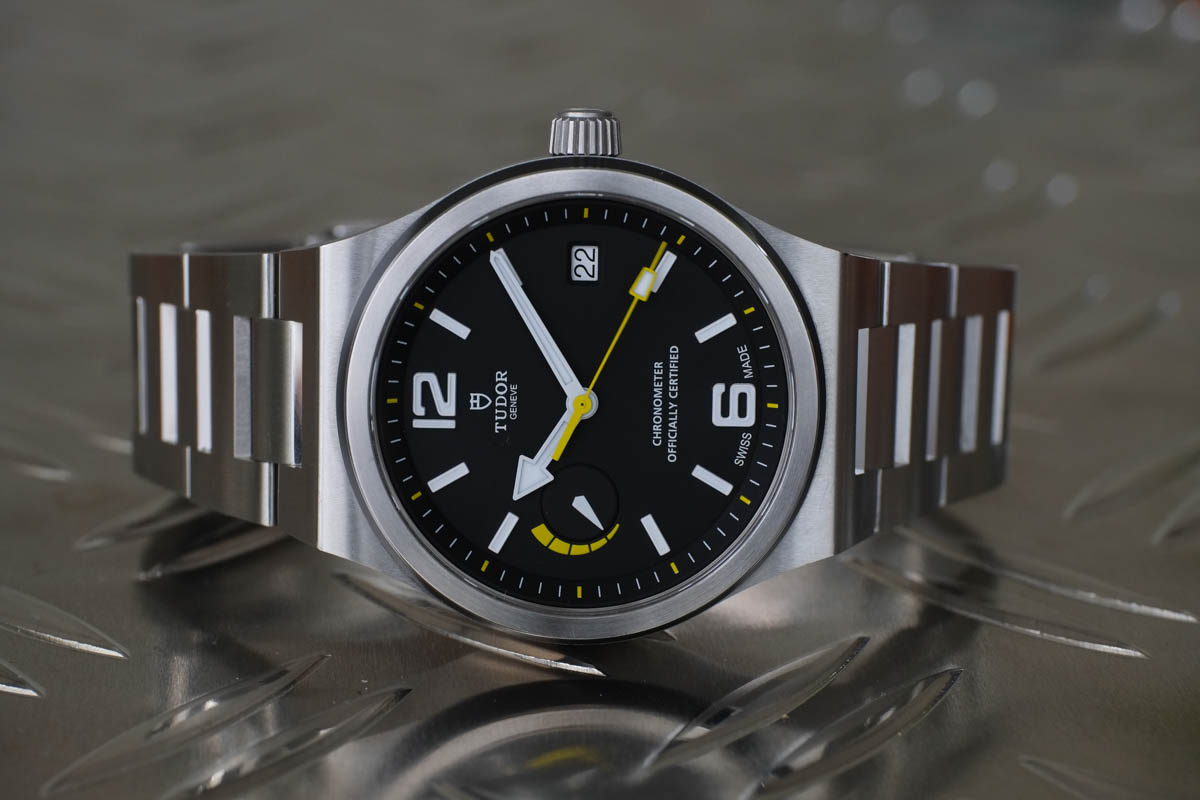
The Tudor North Flag - Image Credit: Guy Parker
The case diameter measures 40mm, with a lug to lug of 50mm. Whilst not slim, the case is certainly within the norms for a non-chrono sports watch, coming in at 13.3mm thick, a fair chunk of which is made up from the double bezel and the 6.5mm thick movement. The case is predominantly very finely brushed (Tudor call it satin). A shallow stainless steel bezel fronts the watch with a wider and much deeper black ceramic bezel sitting beneath, which slopes inwards slightly from bottom to top.
Adding this ceramic bezel seems to have helped the North Flag wear its bulk well. Looking front-on you can see the ceramic bezel peeking from beneath the stainless steel and side-on it helps draw the eye to the mid-case, which is relatively slim. The ceramic is a lovely touch which adds to the uniqueness of the watch and should prove very durable.

The Tudor North Flag - Image Credit: Guy Parker
There is some nice attention to detail paid to the case too, such as the distinctive downward kink at the lugs, the razor-sharp polished bevel around the stainless steel bezel and its broader counterpart on the rear of the mid-case which tapers slightly as it reaches the kink in the lugs. There is sapphire crystal front and back, with the rear providing a good view of the movement beneath. Simple text runs around the circumference of the caseback proudly stating ‘Tudor Manufacture Calibre MT5621’.

The Tudor North Flag - Image Credit: Guy Parker
A huge selling point of the watch is Tudor’s first-ever in-house movement, the COSC certified MT5621, which has a bi-directional rotor, free-sprung balance, silicon hairspring and 70-hour power reserve. It’s not highly decorated but certainly has its own unique ‘down to business’ charm, with sand-blasted bevelled plates and a sunray brushed open-worked rotor, perfectly in tune with its tool watch vibe. The movement is hacking, ticks away at 28800 beats per hour and has a power reserve and date complication. In the scheme of things the movement is still relatively new and has yet to prove its long-term reliability, with most North Flags not even having seen their first service. What I can say is that for me personally it’s proved itself to be consistently reliable and accurate. It’s also extremely silent in operation with an incredibly smooth spinning rotor. You can’t even feel the rotor move on your wrist and it inspires great confidence. I’d say without hesitation that it’s my most silent watch. It has none of the whirrings or wobbles that you get on something like a Valjoux or Miyota and feels more refined than any of my ETA automatic movements.

The Tudor North Flag - Image Credit: Guy Parker
The cupcake-shaped crown, signed with the Tudor shield, inspires confidence in its operation too. It’s got a lovely feel when manually winding, has precise indents for the date and time setting positions and screws down providing 100m water resistance. The most sublime thing though is that you turn the crown away from you to turn the hands forward, something that just seems so right and intuitive. I wish all movements could operate this way, sadly few do. It’s a small thing, but it puts a huge smile on my face every time I use it. With no crown guards, the modestly proportioned ridged crown is easy to grip. The shape of the crown and the fact it’s placed centrally within the mid-case also add to the watches comfort.

The Tudor North Flag - Image Credit: Guy Parker
A deep-dished, sloped chapter ring with a mix of yellow and white markers brings some added depth to the matt black dial, which itself has a slight grain to it. Matt white, baton-shaped indices sit at the hour markers, with Arabic numerals at the 12 o’clock and six o’clock positions. These chunky applied indices contrast nicely against the dial and are all lume-filled. They also have significant depth to them, with the outer edges sitting proud of the lume pool, creating a kind of outline, all of which really helps bring the dial to life and give it a 3D quality. I have however noticed some imperfections under the macro lens.

The Tudor North Flag - Image Credit: Guy Parker
Tudor has really managed to inject some personality with the power reserve (PR) complication which sits at nine o’clock, deciding not to plump for a standard design, but to create something unique to the North Flag. Instead of an applied hand attached to a centre post, the white printed arrow-shaped indicator sits within a circular disk, with the disk itself rotating. The PR scale is split into five segments, each printed in yellow separated by black negative space. People often question the use of a PR on an automatic watch, saying it’s more at home on manual wind watches, but I disagree. On a bleary-eyed, panic-driven Monday morning it’s nice to be able to tell at a glance if it’s ready to just grab and go. If not, you’ll reach for one of your other watches that is.
A well placed, larger than average date window is pushed across towards the outer edge of the dial at three o’clock. Tiny date windows, poorly placed, are a pet peeve of mine, so this gets a big thumbs up from me. And whilst I’m often not a fan of a black-on-white date wheel, I believe it was the right choice here. It provides balance to the power reserve, and white-on-black would have disappeared into the dial a bit too much, leaving a perceived visual gap at the three o’clock.
The bold arrow-shaped hour hand and pencil-shaped minute hand are again liberally filled with lume. Completing the handset is a yellow seconds hand with a trapezium-shaped lume segment.

The Tudor North Flag - Image Credit: Guy Parker
Lume throughout is first-rate, and lasts well into the night; I’d say it’s easily on par with pretty much anything else I own. It’s also a doddle to orientate the watch in the dark with the big 12 and six o’clock Arabic numerals and lume gaps at nine and three providing instant reference points. The dial and hands have been designed with absolute clarity in mind and the whole set-up achieves a strong, simple, almost graphical look, with the pops of yellow and idiosyncratic power reserve bringing dynamism and sense of fun to what could otherwise be a very serious, germanic looking watch.
In terms of the text on the dial, Tudor has thankfully kept it simple, opting for a ‘less is more’ approach. Centrally placed and occupying the top half of the dial is the Tudor shield and logo, with the word ‘Geneva’ underneath. Positioned centrally in the bottom half is ‘Chronometer Officially Certified’, and the words ‘Swiss made’ curve around the base of the dial.
Comfort and wearability

The Tudor North Flag - Image Credit: Guy Parker
This is an often-overlooked element and something that I’m becoming quite obsessive about as my watch collecting journey continues. But even going into a purchase with my eyes wide open, aware of all the usual pitfalls, sometimes it only becomes apparent a few days into the honeymoon period that a watch has design flaws which affect its wearability.
My main concern when buying my North Flag was the slab-sided case, but I’m glad to say that my concerns very quickly diminished. I can’t quite put my finger on it, but for some reason, it just works on the North Flag, You’d think that a double bezel atop a slab-sided case would mean that it would wear every bit of its thickness, but in reality, it manages to wear it’s thickness well.

The Tudor North Flag - Image Credit: Guy Parker
Whilst I’ve yet to try the North Flag on the leather strap, on the bracelet it wears an absolute dream, being extremely comfortable and perfectly and balanced on the wrist. The crown never dents my hand, the caseback doesn’t scrape the back of my wrist, I can easily achieve a good fit using the half-links and micro-adjust clasp and it slips under all but the tightest of shirt cuffs, making it an easy wear.
The bracelet

The Tudor North Flag - Image Credit: Guy Parker
I’m actually a big fan of integrated bracelets when done right, and the North Flag is most definitely done right. It’s clear that a lot of thought has gone into the design stage, with watch and bracelet unified by the same design language. Predominantly brushed, it’s made up of H-style links secured by screws with a simple but well-designed clasp comprising polished and brushed elements, which when closed form a Tudor shield. The whole set-up feels amazing on the wrist; fluid and solid.

The Tudor North Flag - Image Credit: Guy Parker
Attention to detail is strong with each centre link having perfectly executed, razor-sharp, polished bevels to the top and bottom edges which catch the light beautifully when on the wrist. The hook and beak style clasp with fold-over safety catch features three micro-adjustments and closes with a reassuring click courtesy of the ceramic ball bearings, which should also ensure precise tolerances over time.
Things we would change
I guess now is a good time to talk about the elephant in the room - the unique lug design! If you’re a strap lover this will undoubtedly frustrate you, as achieving a different look will cost you a pretty penny or two. Tudor’s own leather strap with yellow stitching is fantastic and looks the part but is an expensive option. Other than that you’ll have to go custom made which could be nearly as much and this might be enough to push the North Flag off your ‘list’. However, this would be a shame and kind of misses the point of the North Flag. For me personally, a major part of the appeal of the North Flag is the cohesion in design that the integrated bracelet brings and this far outweighs any desire for it to be a strap monster!

The Tudor North Flag - Image Credit: Guy Parker
A slightly thinner case certainly wouldn’t go amiss though and whilst the combination of half links and micro-adjustment on the bracelet should allow for a perfect fit, it’d be nice to have on-the-fly adjustment for those days when your wrist swells or contracts.
Other than that, about the only other thing I’d like to see improved is the anti-reflective coating on the front sapphire, not only to combat reflections but to also give the illusion of a richer, deeper black dial. Luckily the North Flag’s high contrast dial and clarity of design mean that reflections are much less of an issue than they would otherwise be though, and it’s only when holding it against something exemplary like my Damasko that I really notice this.
All-in-all these are pretty minor gripes, none of which have had a negative impact on my enjoyment of the watch.
Final Thoughts
What I love about the North Flag is that its just...the North Flag. Have you ever tried to explain to your watch buddies in as few words as possible and without pictures, which variation of the Black Bay line-up you own? It’s not easy! There are now well in excess of 20 variations; enough to make up an entire catalogue of some brands. The North Flag on the other hand stands alone, strong and resolute. No dial variations, no colour combos, no size variants. It’s unapologetically modern, technical and distinctive and I admire Tudor for releasing it.

The Tudor North Flag - Image Credit: Guy Parker
I put my money where why mouth is for the North Flag. The fact that it was Tudor’s first-ever watch with an in-house movement was a huge drawcard, but so was its uniqueness in their line-up. It’s a watch with conviction which I feel most represents the brand's tagline ‘born to dare’. It’s also the perfect antidote for those tiring of vintage re-issues and Rolex ‘homages’; a watch for those who like to venture off the beaten path.
The longer I’ve lived with it, the more reasons I’ve found to love it. To me, it’s the perfect everyday watch. On the surface, it’s a thoroughly no-nonsense looking watch that actually comes across as quite Germanic. Look closer however and it becomes apparent that the North Flag is not bereft of subtle details which reveal themselves to you one by one. The highly polished, well-executed, razor-sharp bevels on the case and centre links of the bracelet, the delightful crown operation, the silent rotor or the industrial-looking flagship in-house movement which endears itself to you - all add to the enjoyment of ownership. The combination of good design and comfort make it my most worn watch out of a collection of 20 or so.
I can’t possibly know what goes on at Tudor HQ, but the North Flag comes across as a watch imagined by someone with a singular vision, perfectly executed by a close-knit design team, and engineered with care. Watches can’t and shouldn’t be made to appeal to everyone and any brand having the confidence to design a watch that doesn’t play it safe should be applauded. The North Flag might not be the biggest success for Tudor in terms of sales, but it’s certainly a milestone watch for Tudor.
The future of the North Flag and the ‘marmite’ effect
Initially overlooked by many, the North Flag does now appear to be gaining more fans, which may illustrate that it’s a slow burner. With its five-year transferable warranty, it’s a great buy at full RRP, but an even more compelling option pre-owned and should retain its value well.

The Tudor North Flag - Image Credit: Guy Parker
My prediction is that it will be one of those watches that will continue its rise to glory. People will look back on the North Flag, along with the Pelagos, as watches that defined the dawn of the modern era for Tudor.
Movement: Manufacture Calibre MT5621, COSC
Dimensions: 40mm, 50mm lug to lug, 13.3mm thick
Price: £2,880
Water Resistance: 100m
Warranty: Five-year transferable.
Released: 2015



